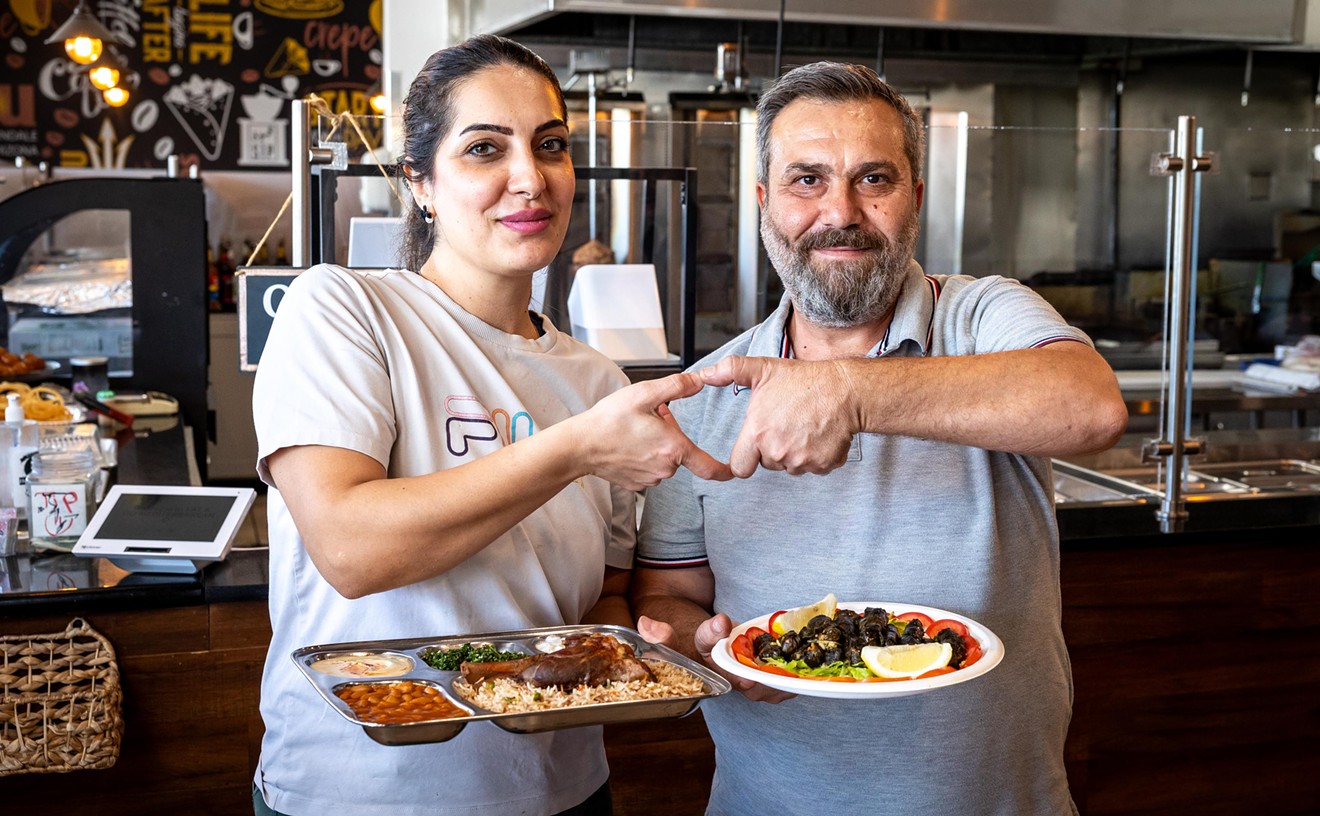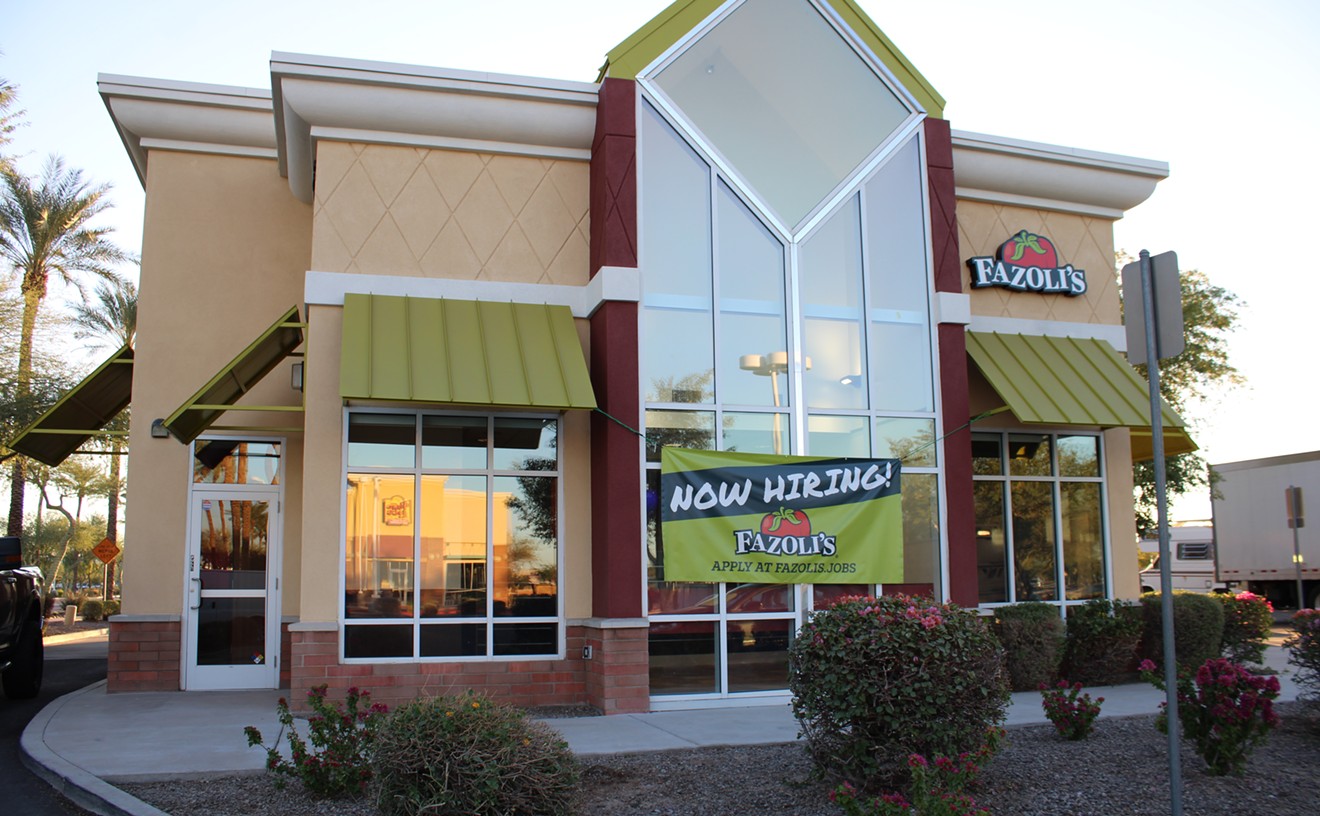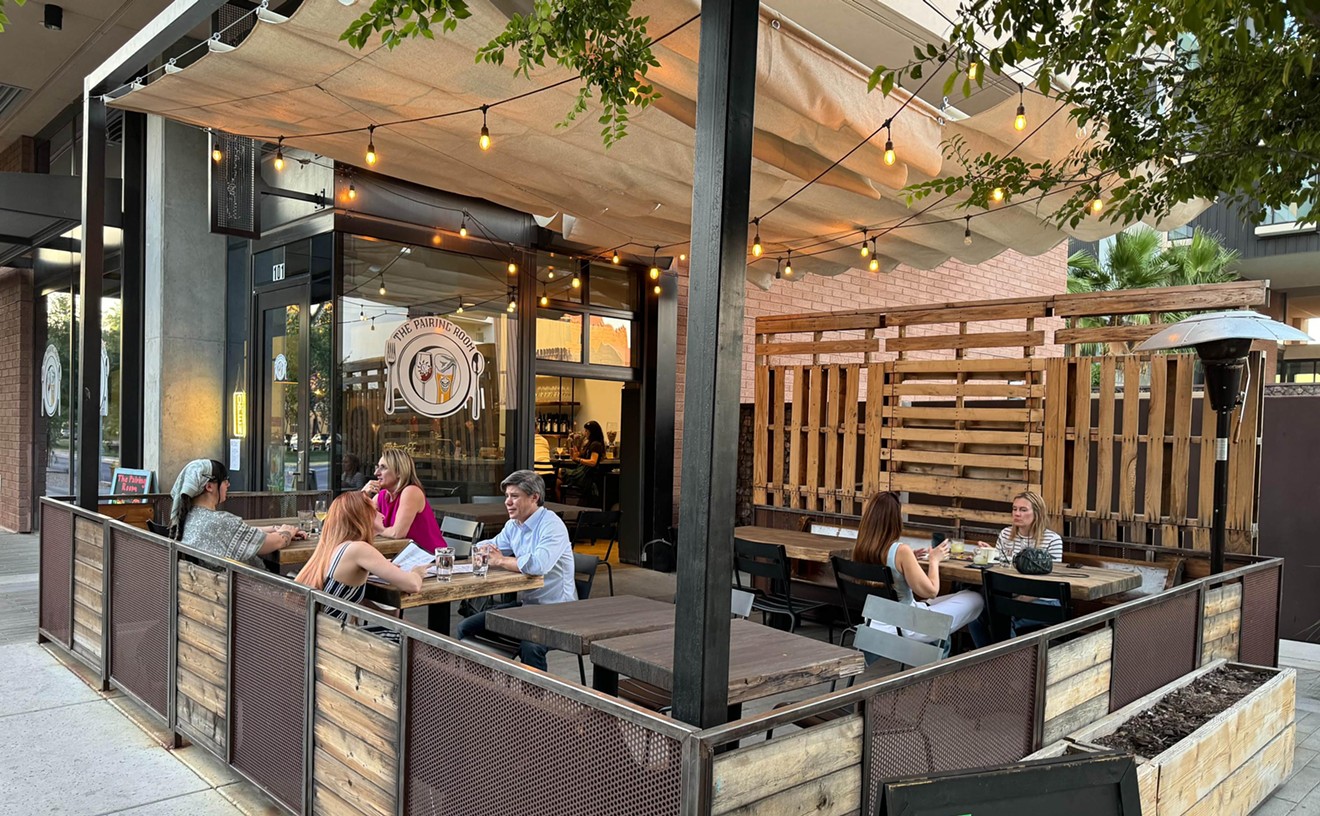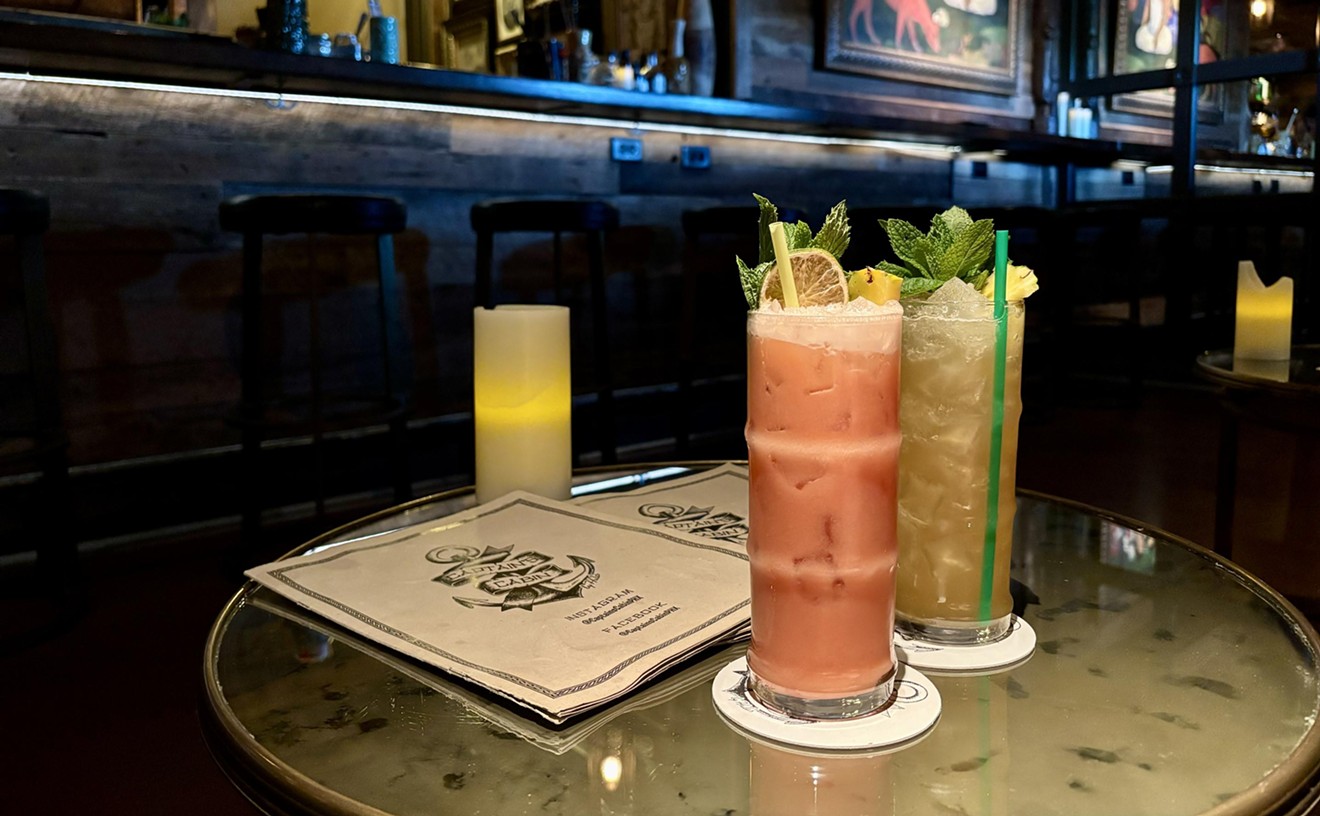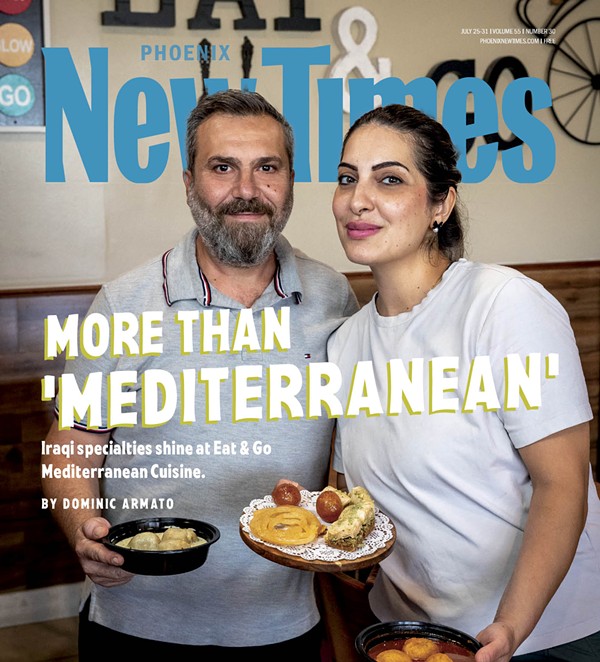There was something wrong with Mrs. Kaplan's lunch. I tattled when I got home.
"The soup was cold, and it tasted like potatoes," I grumped to my parents. "And the bread was crazy. It looked like a doughnut, but when you bit it, it kept coming."
"Vichyssoise," my father replied. "And you ate a bagel. It's Jewish food; it's supposed to be like that."
Until Rose and Sam Kaplan moved onto our block, every single other neighbor was a white, middle-class Protestant. My mother, convinced I would never meet anyone "different" living in West Phoenix, was keen on me getting to know some Jews.
I wasn't interested in culture or cuisine. The Kaplans had a swimming pool, the only one on the block. Rose didn't make me wait a half-hour after mandel bread before going in. I ate at the Kaplans often in 1967: kugel and gravlax and matzoh brei. Always there were bagels: fresh ones from Ronay's, and on special occasions — proof that the Kaplans were as different as my mother hoped they'd be — Rose had them shipped in from Zabar's in New York.
The Kaplans eventually moved away, and bagels became an artifact for me, a part of the past beyond my reach. They weren't to be found on restaurant menus here; they might as well have returned to the 17th-century Poland from which they'd originally come. I moved downtown in the early '80s, right around the time bagels were getting trendy. The salt bagels at Munchabagel weren't as good as the Kaplans', but a little lox schmear helped.
Making a better bagel is no walk in Masada National Park.
tweet this
Thirty years later, I am still looking for a really perfect Phoenix bagel. Baker Mandy Bublitz, who makes bread for St. Francis restaurant and has been experimenting with bagel-making, told me a story: She recently polled her foodie friends about what makes a bagel better. A pal from New Jersey told her not to bother thinking about bagels as good or bad. "New York has a bagel scene," the friend explained. "Your city does not." I wondered if Bublitz thought this was because there were more people in Manhattan who knew a good bagel when they bit one, whereas to most people here, a bagel was mostly a thing to spread raisin-studded cream cheese on.
"Maybe," she sort of agreed. "Or maybe it's that a good bagel is an expensive thing to make for an audience that doesn't know the difference." A really perfect bagel, she explained, should be served very soon after baking. That means extra time and money and skill to turn out something that may not sell while it's still fresh from the oven, one of the things that's crucial to its success. In the desert, Bublitz admitted, the trouble might just be a lack of demand.
"I'm nervous about selling bagels," admitted Country Velador, pastry chef at Cowboy Ciao. She's been trying her hand at bagel-baking and plans to offer them for sale this fall at Super Chunk Sweets and Treats, the sweet shop she owns in Scottsdale.
"People are very picky about their bagels," she said. "They either know what a good one is supposed to be like, or they think they do, based on the grocery store bagel they usually eat. Either way, they might be disappointed."
Velador recently ate a bagel at Russ and Daughters, the famous New York City deli. It was very dense and hard on the outside — the proper bagel, the kind that in-the-know bagel eaters love. "I like mine more crunchy outside and moist inside," she told me. "The New York bagel nearly took my molars out."
A proper New York-style bagel has a dense, chewy, doughy interior and a crisp, shiny crust covered in tiny blisters and dusted underneath with corn meal. Biting one should result in a distinct "pull" and the flavor of fresh-baked bread. A Montreal-style bagel contains malt and sugar but no salt, and it is boiled in sweetened water before baking, usually in a wood-fired oven. The finished product is smaller and crunchier and has a larger hole than the more traditional New York-style bagel, which is prepared similarly, but with salt instead of sugar in its batter and boiled in salted water before baking in a regular oven.
Velador's not necessarily using either of these established recipes. She isn't interested in being authentic, or even accurate, in her bagel-making. "I warn people that I'm making Arizona bagels. Mine are somewhere in between bread and a pretzel. I'm adding a lot more baking soda, which I think will turn some people off."
Making a better bagel is no walk in Masada National Park. My husband-to-be, a Jew, makes them. I know a little about proofing times, retarding times, baking times, and the correct ratio of malt to boiling water. You hand-roll an enriched dough, then let it rise, slowing its proofing with a bowl of ice or a trip to the fridge before forming each bagel, boiling it quickly in malted water, then baking.
It doesn't seem sporting to say, "Your bagel is not as good as my bubeleh's bagel" to the entire bagel-baking community, so I have continued to seek them out, always in search of a better salt-to-malt ratio. I am looking for the perfect initial bite and crust; the way the springy-chewy inside pulls apart; a doughy, yeasty, but not too sweet interior. Always I order plain bagels; sometimes a salt or a sesame; occasionally an everything bagel. I marvel at but pass over the tawdry flavor variations that fill cases at even upstanding bagel shops. Who eats a spinach-artichoke bagel? What exactly is a Dutch apple power bagel?
I had an everything bagel at Everything Bagels (6025 N. 16th St., 602-277-0020) and wished I hadn't. Here was a shop whose name made promises it didn't keep, unless the "everything" was meant to include "flavorlessness" and "day-old texture."
I routinely order the housemade bagels at Scott's Generations (5539 N. 7th St., 602-277-5662, www.scottsgenerations.com). Sesame or plain, they're not as crisp as I like, but have a great flavor and a nice hole structure. At Chompie's (9301 E. Shea Blvd., Scottsdale, 480-860-0475, www.chompies.com), the egg bagels are chewy and fresh, with a hint of poppy seed and a yolky yellow hue that I suspect isn't food-coloring. The salt bagels are nicely salted, with a perfect bagel shell. And I admit it: I sometimes order a cinnamon crunch bagel, one of those bagel aberrations that scream "goyisha!" and so I oblige.
Phoenix Public Market Café (14 E .Pierce St., 602-253-2700, www.phxpublicmarket.com) serves a puffy, just-sweet-enough bagel with a slightly malty taste that's more serviceable as a conveyance for lox and cream cheese. Its bagels are made in-house and are displayed on a pair of spikes by the cash register, and they sometimes take 20 minutes to toast and butter and deliver to your table, even on a slow day.
I admit that the plain, fresh-from-the-oven bagel I got from Einstein's (www.einsteinbros.com) was a game changer. It had a proper bagel's chewiness, a neat, shiny glaze, and a hint of cornmeal on the bottom. When I confessed to my spouse that I expected a lot less quality from a bagel franchise, he sent me to Safeway to buy a poppy seed bagel from its bakery, as penance. This also was surprisingly good: fresh, with a fine hole structure, and perfect salty-malty-sweet balance.
Coffee house bagels, usually provided by a local, off-site bakery, are a mixed bag in our town. Copper Star's bagels (4220 N. 7th Ave., 602-266-2136, www.copperstarcoffee.com) are baked evenly brown, dense and sweet.
Giant Coffee serves bagels made by Wildflower Bread Company (4290 E. Indian School Road, 602-850-8585, www.wildflowerbread.com), and they are huge, bready, and pillowy, but not in a good way — in a Posturepedic way.
I'd been hearing from foodies about Kal, a transplanted New Jerseyan who owns a shop called The Bagel Man in Ahwatukee (5035 E. Elliot Road, 480-705-9999). His New York-style bagels had pretty much everything I look for in a bagel: a firm and crunchy crust with a satisfying crunch; a rich, medium-brown glow; a moist and light interior, and a size neither too large nor absurdly small. I don't know Kal's secret. He doesn't return telephone calls.
I also did well at Nocawich (777 College Ave., Tempe, www.nocawich.com), just opened by restaurateur Eliot Wexler, late of fine-dining fave Noca. Wexler's shtick is that he's flying in half-baked, frozen bagels from New York's landmark H&H Midtown Bagels. They're worth standing in line for — and you will. Nicely glazed and slightly biscuity, the H&H bagel was dusted with cornmeal and had a perfect hole-to-bread ratio. All it needed was a little butter, and it was perfect.
Nami (2014 N. 7th St., 602-258-6264, www.tsoynami.com), a vegan eatery, offers a whole grain vegan bagel for the ever-increasing anti-gluten crowd. I tried to eat one, but a gluten-free bagel seemed pointless. Chewy but not crisp, crusty but way too bready, it seemed a mean-spirited mockery of baking traditions. Also, I was frightened by the quotation marks around the condiments offered: What were "butter" and "cream cheese" made of?
Mandy Bublitz worries that today's gluten-free trend has cursed the bagel. It was bad enough, she confided, when we were expected to run from carbs, the prominent ingredient of any real bagel. "But now," she said, a hint of horror in her voice, "we're supposed to be suspicious of white flour. And carbs. Bagels are pretty much entirely carbs."




